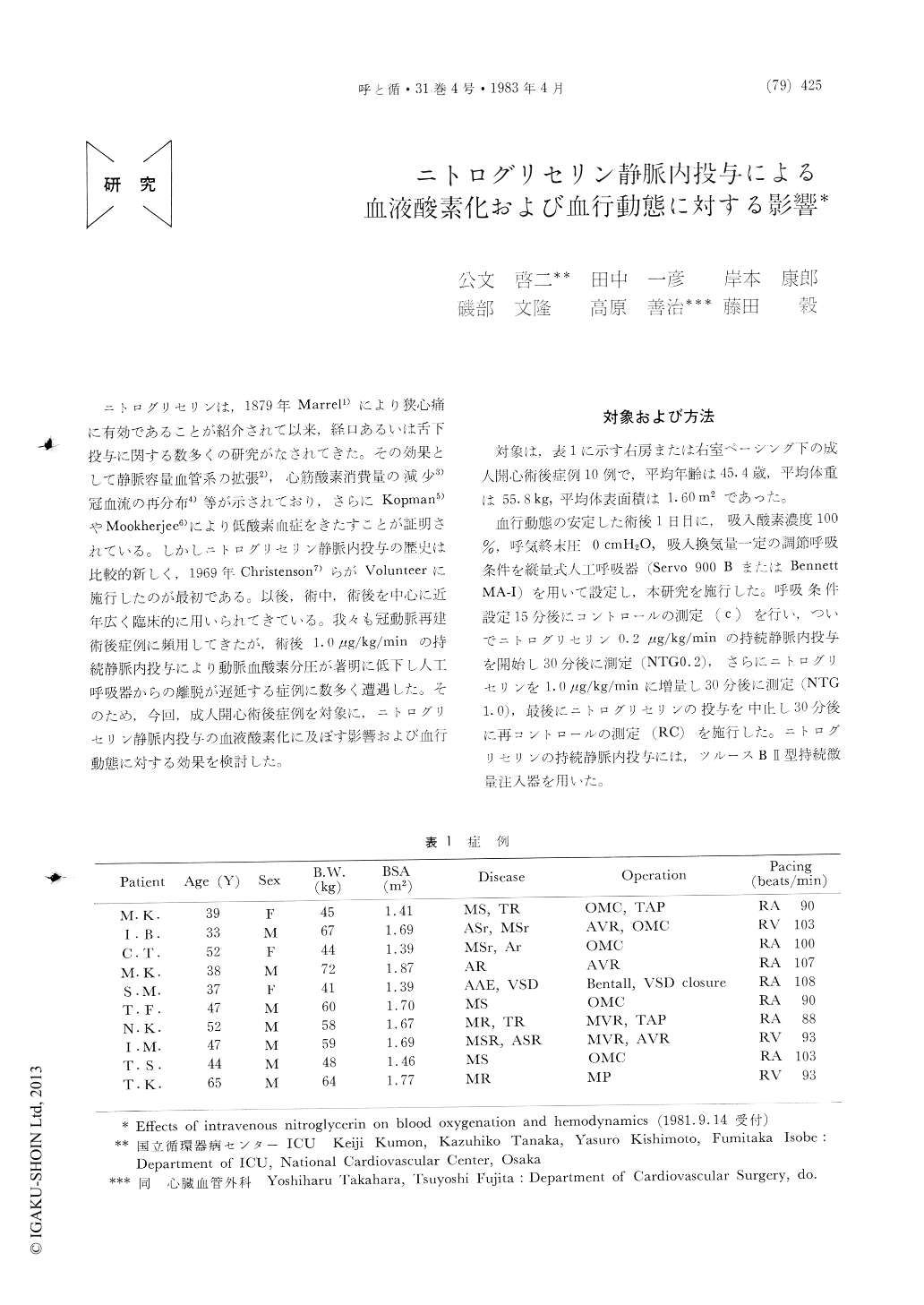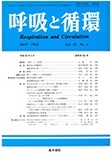Japanese
English
- 有料閲覧
- Abstract 文献概要
- 1ページ目 Look Inside
ニトログリセリンは,1879年Marrel1)により狭心痛に有効であることが紹介されて以来,経口あるいは舌下投与に関する数多くの研究がなされてきた。その効果として静脈容量血管系の拡張2),心筋酸素消費量の減少3)冠血流の再分布4)等が示されており,さらにKopman5)やMookherjee6)により低酸素血症をきたすことが証明されている。しかしニトログリセリン静脈内投与の歴史は比較的新しく,1969年Christenson7)らがVolunteerに施行したのが最初である。以後,術中,術後を中心に近年広く臨床的に用いられてきている。我々も冠動脈再建術後症例に頻用してきたが,術後1.0μg/kg/minの持続静脈内投与により動脈血酸素分圧が著明に低下し人工呼吸器からの離脱が遅延する症例に数多く遭遇した。そのため,今回,成人開心術後症例を対象に,ニトログリセリン静脈内投与の血液酸素化に及ぼす影響および血行動態に対する効果を検討した。
The effects of intravenous nitroglycerin (NTG) on blood oxygenation and hemodynamics were studied on 10 patients who were operated open heart surgery and had been controlled with atrial or ventricular pacing.
On the 1st post-operative day, after baseline values had been obtaiend (C),continuous intravenous administration of NTG was started in rate of 0.2μg/ kg/min. Thirty minutes after the initation of the infusion, the variables were determined (NTG 0.2) and then the dosage of NTG was increased to a rate of 1.0μg/kg) min.

Copyright © 1983, Igaku-Shoin Ltd. All rights reserved.


